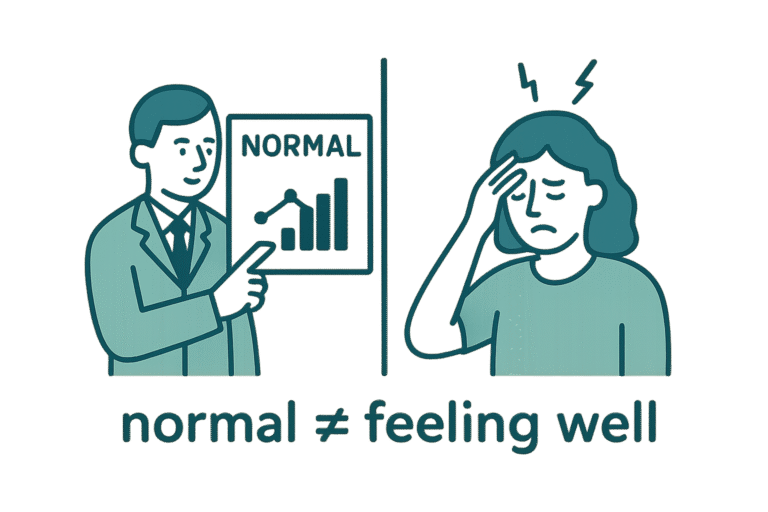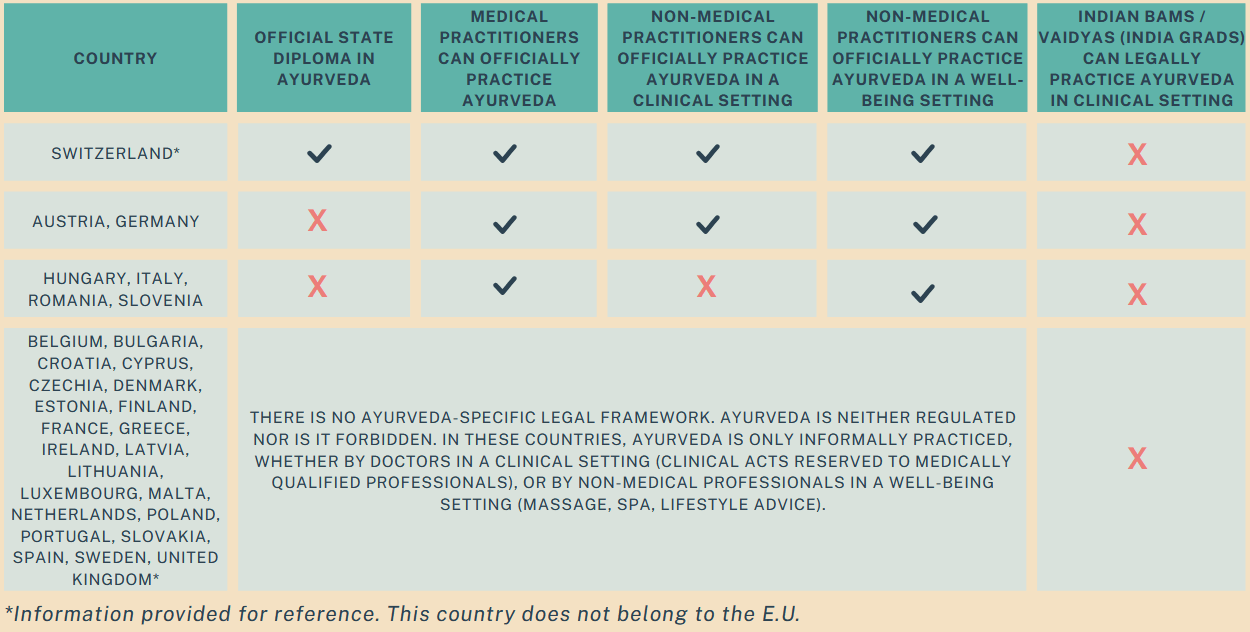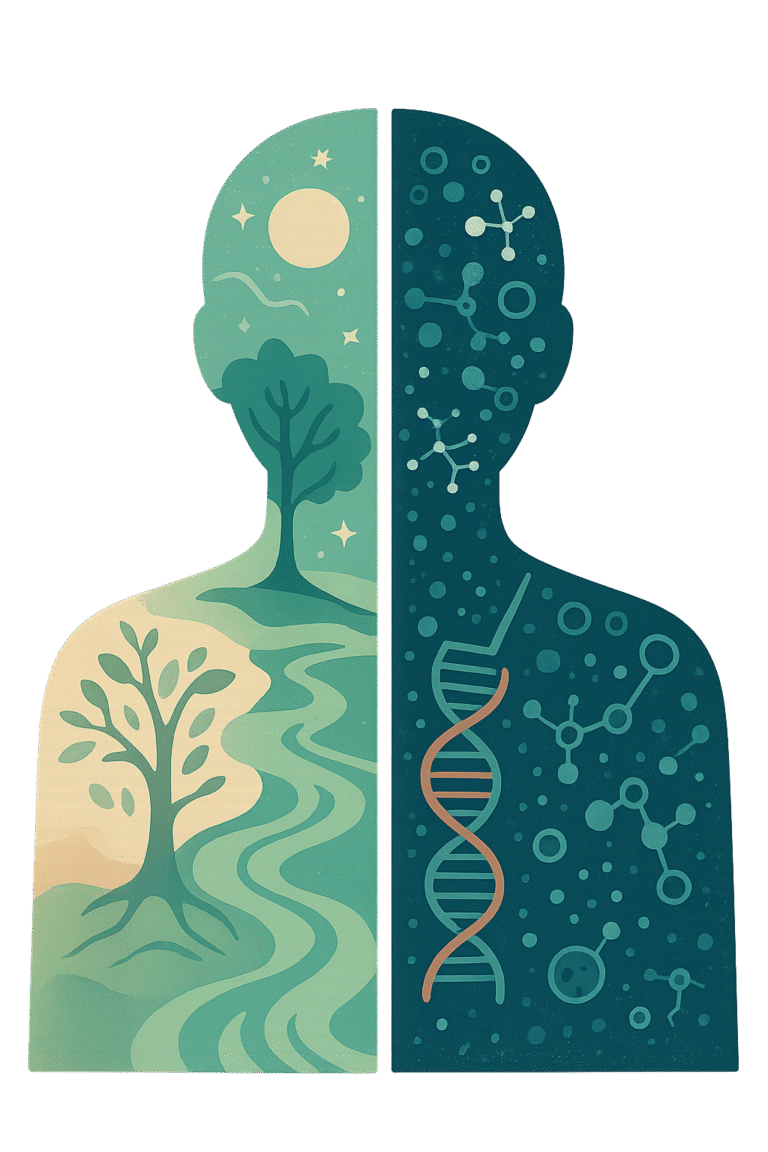Understanding Ayurveda: Philosophy, Practice, Status, and Modern Relevance
What Ayurveda Therapy Is — And Why It Still Matters
Contents
When “Nothing’s Wrong” Still Feels Wrong: A New Look at Health
Why a 2,000-Year-Old System Still Solves 21st-Century Problems
From Ancient Roots to Today’s Global Recognition: The Journey of Ayurveda
How Ayurveda Works: The Art and Science of Balance.
A Note on Spirituality and Ayurveda.
Ancient Wisdom, Modern Ease: Why Ayurveda is Very Approachable.
A System, Not a Technique: Where Ayurveda Fits Among Other Approaches
Try It Yourself: Gentle Ways to Begin Living Ayurveda.
When “Nothing’s Wrong” Still Feels Wrong: A New Look at Health

This has happened to me more than once, and I’m sure it resonates with many: I’m feeling under the weather, so I go to the doctor. They run some lab tests and deliver the verdict: “Everything looks normal.” That’s good news! Or is it? Because I am still feeling lousy. However, without a medical diagnosis there is no treatment, just a pat on the back and a “I’m sure it’s nothing”, or “come back to see me if things get worse.” You leave wondering if it’s all in your head. You hope that this will go away by itself, or sometimes even that your health will deteriorate enough for someone to finally “measure” it, name it, and help.
Here is the thing. Health is so much more than the management or absence of disease. One can feel unhealthy without a diagnosable illness, and conversely, one can have a disease yet feel relatively well. The World Health Organization pointed this out decades ago: real health includes physical, mental, social, and emotional well-being. And here’s the kick: modern science is only now catching up to what Ayurveda has been saying for millennia:

Health and illness aren’t an on-off switch but points along a spectrum. We’re all somewhere in between, all the time. You can think of it like tuning a radio—you’re always adjusting the dial to get a clear signal.
Modern medicine, oriented towards diagnosing and eradicating disease, has become incredibly skilled at precisely this — but that very focus leaves it less adept at addressing the other layers of health, which lie before and beyond disease. This is precisely where Ayurveda offers a different lens, thanks to its emphasis on balance, resilience and the continuous cultivation of health in all of its facets. If you walked into an Ayurvedic consultation saying, “my lab tests look all normal, but I just don’t feel well,” the practitioner would start right there—with how you feel. Wherever you may find yourself on the spectrum between health and illness, they will be able to help you adjust the dial.
Where today’s research sees a “new” model of dynamic, multi-dimensional health, Ayurveda simply nods and says, “Welcome to the party.”
Why a 2,000-Year-Old System Still Solves 21st-Century Problems

We live in an age where you can track your heart rate on your wrist and get medical advice from a search bar. So why bother with a health system that’s thousands of years old? Because, surprisingly, Ayurveda answers questions our high-tech world still struggles with.
Modern life gives us a whole lot of “conveniences,” perhaps, but it also gifts us stress, burnout, sleep problems, and a steady drip of anxiety—on top of a non-negligible number of chronic diseases in Europe. These aren’t just annoying quirks; they’re the very things fuelling today’s epidemics of lifestyle- and pollution-related illness —from stress-induced insomnia to respiratory conditions and metabolic disorders. And the thing is, most of them can’t be solved with a single treatment course, or surgery.
This is exactly where Ayurveda shines. While modern medicine targets disease aggressively, this traditional system looks at well-being more broadly: physical, mental, social, and emotional. It looks for the many factors that may negatively affect your physiology, teaches you to notice the body’s subtle signs of imbalance, and helps you make adjustments that will compound to improve your well-being in the long term.
Instead of waiting until your body waves a giant red flag, Ayurveda says: “Pay attention to your body’s whispers.” That afternoon slump, your touchy digestion, tense shoulders — these are signs your system is tipping out of balance. And instead of limiting the approach to fighting illness, Ayurveda says: “Let’s also improve your well-being.” There’s no reason why you can’t support your overall health while modern medicine is out to get the disease.
Here’s how Ayurveda is particularly relevant in the EU today:
- Stress and burnout: When your brain feels like 59 browser tabs are open, Ayurveda offers simple daily practices to quiet the noise.
- Gut health: Long before “probiotics” became a buzzword, Ayurveda knew that digestion is the foundation of well-being.
- Prevention over crisis management: While modern medicine often kicks in after things go wrong, Ayurveda is all about keeping you from falling off the cliff in the first place.
- Mind-body connection: Ayurveda never separated mental and physical health—something science is only now catching up to.
- Personalisation: Forget one-size-fits-all advice. Ayurveda tailors its solutions to you—not to some mythical “average person.”
In other words: Ayurveda isn’t about ditching your doctor. It’s about filling in the gaps our current health system leaves wide open—helping you feel balanced, resilient, and genuinely healthy.
From Ancient Roots to Today's Global Recognition: The Journey of Ayurveda

Ayurveda (“the science of life” in Sanskrit) is said to have roots in the “Indus Valley civilisation” — in what’s now modern-day Pakistan. We’re talking about a medical tradition that’s been around for more than two millennia. Along the way, it didn’t stay in a bubble. Ayurveda traded ideas with other great medical systems of the ancient world, including Chinese, Tibetan, and even Greek traditions.
Fast-forward to today, and Ayurveda is still thriving in countries like India, Nepal, Sri Lanka, and Bangladesh, where it’s practiced as part of an unbroken living tradition. Here, it is used in hospitals and universities, with licensed physicians applying both preventive and curative treatments to address disease (even though the definition of disease is different in Ayurveda, compared to modern medicine). These include intensive therapeutic procedures, known as panchakarma, aimed at restoring deep physiological balance.
But Ayurveda hasn’t stayed local. From Brazil to Australia, South Africa to the Middle East, and of course across North America and Europe, Ayurveda has gone international, and it is recognised by the World Health Organisation as a “traditional complementary medicine.”
In Europe, Ayurveda’s recognition varies (please note that this can change over time). Depending on where you live, Ayurveda might come with a prescription pad—or simply a wellness brochure.
Table of countries by legal status of Ayurveda in the E.U.

A common distinction is made between “clinical” and “non-clinical” Ayurvedic practices. Clinical acts include internal procedures—such as enemas, purgations, or emesis—as well as prescribing herbs and compounds aimed at treating diseases as defined by modern medicine. Non-clinical practices, on the other hand, encompass external therapies like massages, oil treatments, and general lifestyle or dietary guidance intended to support overall health and well-being. In the European Union, clinical acts are generally reserved for licensed medical professionals, with few exceptions, whereas non-clinical practices can usually be offered by non-medical practitioners in wellness or holistic settings.
How Ayurveda Works: The Art and Science of Balance
Ayurveda’s recognition around the world highlights its credibility and adaptability, but formal acknowledgment only tells part of the story. Its true essence lies not in regulations or institutions, but in the principles that guide it. Across cultures and continents, practitioners and clients alike operate within the same framework.
At the heart of Ayurveda is one simple idea: balance matters. Life itself depends on it. Don’t worry—Ayurveda isn’t about mystical incantations or holy crystals worshipped by moonlight. It’s rooted in careful observation of nature and the constant dance of forces around us, much like tides that ebb and flow under the pull of the moon. Humans? We’re part of that dance. Our bodies and minds are constantly influenced by the world around us. No wonder your mood brightens on a sunny day and sinks under a grey sky.

Every interaction we have—what we eat, the thoughts we linger on, the lights and sounds we absorb, the speed of our daily lives—can either nurture our inner balance or throw it off-kilter. And since literally everything around us affects our balance, then literally everything can be medicine or poison. A morning cup of coffee might give you the perfect boost one day, but leave you jittery and anxious another, depending on your current state. Ayurveda studies this intricate web of interactions, and draws on nature’s toolkit to help guide body and mind back toward harmony.
How does it do it? Ayurveda uses qualities, not just quantities. Imagine standing in the sun on a cool morning. A scientist might describe that moment in terms of degrees, light intensity, and UV exposure. Ayurveda would describe it differently—through its biocharacteristics, or effects that it has on your body: warm, bright, and light.
Here’s where it gets clever: Ayurveda can predict how your physiology will react to this situation, based on your current state (your current “dominant qualities”). When you feel cold, heavy, or sluggish, that morning sun is medicine—it awakens circulation and improves mood. But when you already feel hot and hyperactive, that same sun just adds “fire to the fire”. This is based on the principle that a quality is strengthened by similar qualities, and diminished by opposing ones (allopathic approach).
Ayurveda reads this interplay of qualities everywhere—in food, weather, emotions, and habits—seeing balance not as a fixed number, but as a dynamic process.
Ayurveda's methodology
What makes this approach more than folklore is its method. Ayurveda’s foundations are observational and empirical: they rest on centuries of systematic observation of nature and the human organism, and on iterative experimentation. Practitioners have long studied how environment, seasons, age, diet, and emotions interact with physiological processes. Ayurveda examines patterns, relationships, and tendencies, tracing how one shift in the body or environment reverberates through the whole system—much like what modern science tries to describe in systems biology. Its principles are continually refined through lived experience: what restores vitality in real people and contexts is kept, what does not is questioned or abandoned.
At its core, Ayurveda provides a coherent way to understand and predict phenomena at a certain scale. It rests on a cosmological model of how the universe and life took form—a grand theory of correspondences between the macrocosm (the universe) and the microcosm (the human being). Within that worldview, Ayurveda approaches health at a macro level—as the dynamic harmony of the whole person in their physical, mental, social, and spiritual dimensions. As such, it is not concerned with, and cannot explain, molecular mechanisms or the biochemical reasons why a given treatment works. Still, it offers a model that proves effective when many factors need to be addressed at the same time.

Modern medicine, by contrast, often operates at the micro level and in the physical dimension. It can explain what happens at the molecular scale and is well-equipped for targeted interventions. An antibiotic can eliminate a specific pathogen swiftly and decisively, and surgery can remove a cyst with precision. Yet swiftness and precision often come at a cost: the systemic causes of disease, as well as the broader effects of treatment—on digestion, immunity, or overall balance—are much harder to understand, predict, or manage.
Far from being opposites, the two approaches have nonetheless different readings of health and physiology; each uses a different language, and each has its own strengths and limitations. Ayurveda reminds us of the wider patterns that connect body, mind, and environment, while modern medicine illuminates the minute mechanisms that sustain them.
In short, Ayurveda is a universal framework applied at the individual level. There are no substances or activities that are inherently “good” or “bad.” What matters is how they interact with your body and mind to tip the scales toward balance—or away from it—at any given moment.
A Note on Spirituality and Ayurveda
Ayurveda approaches the personal, day-to-day experience of health in a very global way. This perspective helps explain why some clinics incorporate spiritual practices: spirituality can offer an additional tool to cultivate balance, aligning life choices with deeper values. Indeed, classical Ayurvedic texts acknowledge that spiritual and faith-based practices can improve recovery, and recognise these as a distinct mode of treatment. But one question arises: which spirituality are we talking about?
Like many ancient sciences, Ayurveda developed within a rich cultural and spiritual context—the Vedic tradition. This tradition remains alive in South Asia, where some practitioners integrate mantras or Vedic rituals into their care. Within that cultural context, these practices can be meaningful and effective. However, they lose all meaning and relevance when blindly applied to clients far removed from this tradition, for example the majority of clients in Europe. They no longer necessarily contribute to clients’ inner balance or harmony with their social environment.
At its core, Ayurveda is a pragmatic science. Nowhere do its classical texts require that clients follow a specific spiritual path or religion. Ayurveda’s main concern is to restore and maintain the mental, physical, and emotional balance of each individual. Therapeutic tools, including spiritual ones, are chosen based on their relevance and effectiveness, not according to dogma.
In line with this spirit, practitioners today can engage clients’ own spirituality – whatever its expression – as a supportive aspect of healing. To do this, they should be open and aware of their own spiritual views, to avoid unintentionally imposing them to their clients. In this way, every intervention remains relevant and aligned with the client’s beliefs and needs.
Ancient Wisdom, Modern Ease: Why Ayurveda Can Also Fit in Our Daily Lives
Here’s something that sets Ayurveda apart from many other traditional medical systems, like Traditional Chinese Medicine: you don’t need a PhD or a secret decoder to start putting it into practice. Sure, the system can get quite detailed and obscure—which is why practitioners are invaluable for guidance—but the core principles are surprisingly approachable. You can learn to read your body and integrate simple reflexes that help maintain balance, autonomously.
At first glance, a 2,000-year-old system of medicine might seem intimidating. So how can it be so approachable in the modern world? The secret lies in its practicality and attentiveness to lived experience. Unlike modern science, which often obsessively measures everything—heart rates, blood panels, calorie counts, and now a million wearable metrics—Ayurveda starts with the body you’re actually living in.
Don’t get me wrong: quantification has its place. Tracking your steps or blood pressure can be incredibly useful. But as media theorist Douglas Rushkoff reminds us, when we quantify something, we automatically lose touch with it at the physical level. Numbers can’t tell us what hunger feels like, or why a meal leaves us heavy or light; yet we may still be tempted to pick foods by calorie count, as if life were a spreadsheet. Ayurveda helps you reconnect to these signals, showing that your own body is the first laboratory for understanding your health.
An example of how this works

Think about cheese, for example. You can tell it’s dense, sticky, and cool to the touch. Even without a lab test, your senses tell you it will likely slow digestion and create a feeling of heaviness if you eat it in excess. Modern science might explain the same effect in terms of high quantities of calcium and fat neutralising stomach acid, consequently slowing down digestion. Ayurveda reaches the same conclusion, but through observation and lived experience rather than abstraction.
This is more relatable for clients, and easier to understand at the somatic level. Once you learn to read these qualities, you begin to see patterns everywhere: sticky and cold substances—like ice cream or refined starches—tend to slow digestion, while light and warm foods—like a clear soup with ginger—do the opposite.
Think of it like learning a new language for understanding yourself and your environment. Because Ayurveda is grounded in direct, sensory observation, clients can quickly become fluent in recognising patterns. This leads to a more collaborative relationship with the practitioner, as well as more autonomy. For instance, as the weather warms, someone might notice they feel more prone to irritation or heat rashes, and intuitively add cooling foods like cucumber or coriander, or take slower walks in the evening shade. What once felt like random discomfort now becomes meaningful, actionable feedback from the body.
In this way, Ayurveda doesn’t just offer health solutions; it cultivates awareness and agency, turning everyday choices into opportunities for balance. It’s not magic, and it’s not a promise to cure disease—but it is a practical, empowering way to maintain balance in daily life, all while knowing that deeper guidance is available when needed.
A System, Not a Technique: Where Ayurveda Fits Among Other Approaches
The world of wellness and alternative therapies is a colorful buffet: reflexology, shiatsu, sophrology, hypnosis, art therapy, yoga, acupuncture, EFT, and on and on. Each of these offers very valuable tools—but here’s the catch: tools only work well within a framework. Without a guiding system, they can only focus on specific symptoms rather than the bigger picture of your health.
Ayurveda is not a single technique—it’s a complete system for understanding and sustaining your health, just like other traditional medicines offer unifying frameworks for understanding the human body and health.

You can think of it like this: phytotherapy (the use of plants for healing) can be applied in very different ways depending on your framework. In modern medicine, plant-based remedies are often used to target and suppress a symptom. In Ayurveda or Traditional Chinese Medicine, the same plants are used to restore overall balance, supporting the body’s natural rhythms and resilience rather than just attacking a symptom. The same tool, completely different philosophy—and completely different outcomes.
It’s important to be clear: just like other “natural” approaches, in the E.U. Ayurveda complements—it doesn’t replace—conventional medicine. It’s not a substitute for a hospital, surgery, or a prescription when you need one.
Some reasons Ayurveda stands out in today's health landscape
- Global and integrative: Ayurveda considers the interplay of body, mind, and environment. All three factor into the picture.
- Personalised approach: You aren’t treated as a “generic patient.” Your constitution, current state, and lifestyle guide recommendations.
- Daily empowerment: Ayurveda helps you integrate routines and dietary principles into daily life, and become your own health detective.
- Rooted in prevention: Rather than waiting for disease to manifest, Ayurveda emphasises constant preventive care—helping you maintain balance and vitality.
- Deep yet accessible: The system can be as sophisticated or as practical as you need. Practitioners are there for guidance, but small lifestyle tweaks are easy to apply autonomously.
Try It Yourself: Begin Living Ayurveda
The beauty of Ayurveda is that you don’t need to overhaul your life overnight. Even small, mindful observations can help you begin to understand your body and mind in a deeper way. Start by simply noticing a few things each day:
- Sleep patterns: Are you getting enough rest? Do you wake up feeling refreshed or groggy?
- Digestion: Are meals leaving you energised or sluggish? Any bloating, heaviness, or irregularity?
- Mood and energy: Are you alert, calm, and focused, or easily agitated, tired, or anxious?
Once you’ve tuned in to these signals, you can experiment with small changes to support balance: adjusting your meal timing, including warm or seasonal foods, introducing gentle movement, or establishing a short morning or evening routine. The goal isn’t perfection—it’s awareness and gradual adjustment, so your daily habits naturally support your physiology and well-being.
Even small steps, consistently applied, help you tune into your own signals and discover what works for your body and mind—making Ayurveda a truly practical, everyday system.
What is Ayurveda Therapy
Ayurveda isn’t a magic pill, a quick fix, or a secret club. It’s an ancient, time-tested system that helps you understand your body, mind, and environment and gives you practical tools to maintain balance, energy, and vitality in daily life. Unlike single techniques or isolated therapies, Ayurveda offers a framework for using a wide range of tools—food, movement, herbs, etc.—in a coherent, personalised way.
What makes it especially relevant today is its simplicity and accessibility. Whether you explore it on your own or with a practitioner, Ayurveda invites you to take the driver’s seat in your own health journey.
In essence, Ayurveda reminds us that health isn’t something handed to us—it’s something we participate in. Whether you use it as a guiding philosophy or as a clinical system, its purpose remains the same: to help each of us live in closer dialogue with our own nature, and with the world that shapes it.
Further Reading & References
What is Ayurveda therapy. If you’d like to explore Ayurveda beyond this introduction, here are some trusted and accessible sources—spanning traditional texts, modern research, and global health institutions.
Official & Institutional Resources
- World Health Organization (WHO): Global Report on Traditional and Complementary Medicine (2019) – provides an overview of how Ayurveda and other systems are integrated worldwide.
- Ministry of AYUSH (Government of India): Official body overseeing education, research, and standards for Ayurveda, Yoga, Unani, Siddha, and Homeopathy.
- Central Council for Research in Ayurvedic Sciences (CCRAS): Publishes research on Ayurvedic pharmacology, panchakarma, and clinical studies.
Academic References & Books for General Readers
- Hankey, A. (2005). “The scientific basis of Ayurveda.” Current Science, 88(10), 1469–1477.
- Patwardhan, B. (2014). “Bridging Ayurveda and Modern Medicine.” Journal of Ayurveda and Integrative Medicine, 5(4), 241–245.
- Charaka, Charaka Samhita, edited by Dr. P.V. Sharma, 1st English edition, Chowkhamba Sanskrit Series Office, Varanasi, 1996.
- Sebastian Pole – Ayurveda: Ancient Wisdom for Modern Wellbeing
Online Portals
- to-ayurveda.ch – Ayurveda trade organisation, Switzerland
- jaim.in – Journal of Ayurveda and Integrative Medicine
- nccih.nih.gov – U.S. National Center for Complementary and Integrative Health (Ayurveda section)
Note: Comments are disabled on this blog to keep the discussion space focussed and free from spam, as I currently don’t have the capacity to moderate them. That said, I love hearing from readers! If you have feedback, reflections, or suggestions, please feel free to reach out directly via the contact page or by email (contact@consultationsayurveda.com). Your thoughts are always welcome.




